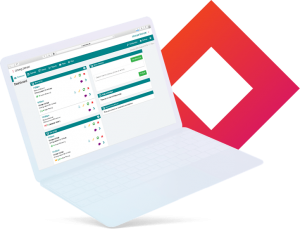
If you’re a Golf Course General Manager, you’ll know the complexities of running a successful golf course. One of the key ways to streamline your operations, improve customer experiences, and increase profits is through the use of software systems. The systems cover everything from golf course operations, togolf lesson systems, and marketing. This article will discuss 10 essential software systems that every golf course should use, along with their descriptions and examples.
1. Tee sheet management software:
Probably the most critical for any course, this software is used to manage tee times, reservations, and other scheduling tasks. It allows golf courses to efficiently schedule tee times, book reservations, and avoid double bookings. An example of tee sheet management software is Miclub.
2. Point of sale (POS) system:
A POS system is used to manage sales and inventory at the golf course’s pro shop or restaurant. It allows staff to track sales, manage inventory, and process payments. POS systems can also integrate with tee sheet management software to keep track of golfers’ purchases and preferences. An example of a POS system is SwiftPOS.
3. Customer relationship management (CRM) software:
This software system is used to manage customer information and interactions. It allows golf courses to track customer preferences, analyse customer behaviour, and tailor marketing efforts. This software can help golf courses increase customer loyalty and retention. A good couple of examples of CRM software is HubSpot or Pipedrive.
4. Course management software:
This software is used to manage course maintenance and operations. It allows staff to track tasks such as mowing, fertilising, and irrigation. The software can also help golf courses plan maintenance schedules, track expenses, and manage labour costs. An example of course management software is Task Tracker.
5. Accounting software:
This platform is used to manage financial transactions and record keeping. It allows golf courses to track expenses, create budgets, and manage payroll. The software can also help golf courses generate financial reports and manage taxes. An example of accounting software is Xero.
6. Golf lesson booking software:
This offers streamlines the process of booking and managing golf lessons and clinics, making it easier for customers to book appointments and for instructors to manage their schedules and lesson plans. An example of golf lesson booking software is bookitLive.
7. Marketing automation software:
This software automates repetitive marketing tasks such as email campaigns, social media posts, and ad placements, saving time and increasing marketing efficiency. An example of marketing automation software is Mailchimp.
8. Inventory management software:
This software system helps manage inventory levels, track product availability, and automatically reorder items when they run low, reducing waste and preventing stock from running out. An example of inventory management software is Ordoro.
9. Online payment processing software:
This software makes it easy for golf courses to accept payments online, reducing the need for manual billing and invoicing and improving cash flow. An example of online payment processing software is eWay.
10. Email marketing software:
These platforms allows golf courses to send targeted marketing emails to customers, promoting events, special offers, and other marketing campaigns. An example of email marketing software is Constant Contact.
In summary, using the right software systems is crucial to managing a golf course effectively. Tee sheet management software, POS systems, CRM software, course management software, accounting software, golf lesson booking software, marketing automation software, inventory management software, online payment processing software, and email marketing software are all essential software systems that can help golf courses streamline operations, improve customer experiences, and increase profits. You should also look at the integrations each has so you can reduce double handling any data that can be shared between the systems. By utilising these software systems, golf course managers can save time, reduce costs, and increase revenue, ultimately leading to a more successful and profitable golf course.